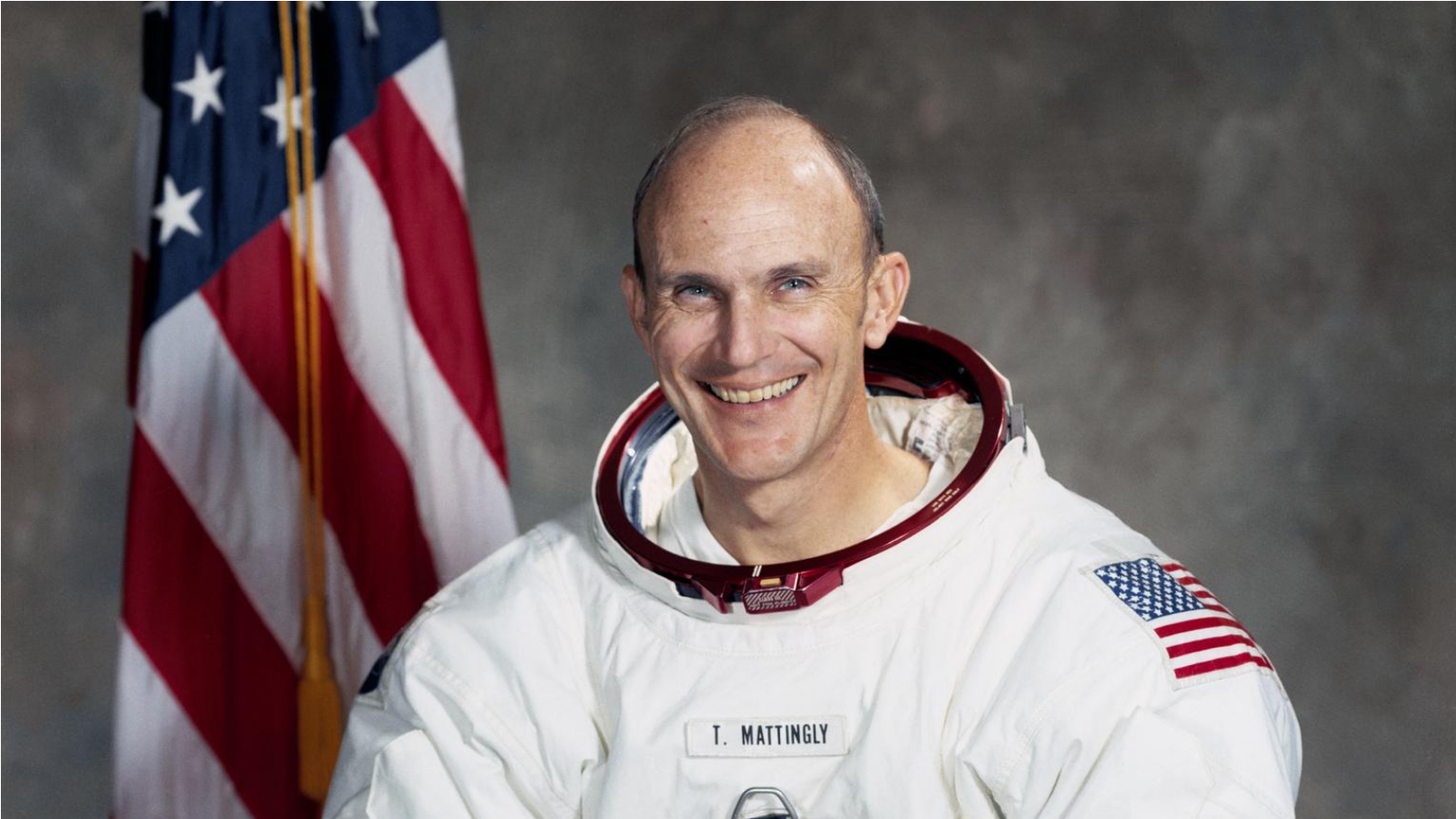

Astronaut Thomas Kenneth Mattingly II, better known as Ken or “TK” Mattingly, died on Oct. 31 at the age of 87. Over his long career he served as a naval aviator, test pilot, aeronautical engineer and most famously as one of the few astronauts to fly to the moon.
NASA confirmed Mattingly’s death this week. In a tribute to the long-time astronaut, who went to space multiple times over two decades, NASA Administrator Bill Nelson said that Mattingly’s “contributions have allowed for advancements in our learning beyond that of space.”
“We lost one of our country’s heroes on Oct. 31. NASA astronaut TK Mattingly was key to the success of our Apollo Program, and his shining personality will ensure he is remembered throughout history,” Nelson said.
Mattingly was born on March 17, 1936 in Chicago, Illinois. After earning a degree in aeronautical engineering at Auburn University, he joined the U.S. Navy, earning his aviator wings. He flew both propeller and jet planes and served at multiple locations, including USS Franklin D. Roosevelt. In 2001, as part of an oral history project by NASA, he said that he initially wasn’t impressed by the space program, at least by its rockets. After seeing a launch while stationed at Naval Air Station Sanford, his opinion changed. He joined NASA in 1966. Before he went to space, he was part of the Apollo program’s astronaut support crew, working on tools and equipment they would need, including space suits.
After training as a backup for the Apollo 11 mission, Mattingly was given a chance to go to space as one of the astronauts on Apollo 13. But shortly before the mission launch, he was exposed to German measles. Although he didn’t contract the disease, he was scrubbed for the mission, and Jack Swigert took his place. When the Apollo 13 mission suffered disaster and the crew and NASA worked to safely get it home, Mattingly worked on the ground, helping figure out how the astronauts could save power and keep the space ship functional (Gary Sinese played him in the 1995 film Apollo 13).
Subscribe to Task & Purpose Today. Get the latest military news and culture in your inbox daily.
After the Apollo 13 incident, Mattingly got a second chance to go to the Moon. He was part of the four-person crew for Apollo 16 in 1972, the penultimate Apollo mission. He finally made it to space, which he later said awed him.

“I looked at that, and I had this terrible sensation that I was seeing so many things that were out of this world, unbelievable. I’m afraid to look again, because I feel like I have an erasable memory and if I see one more thing, it’s going to write over something I just saw and I’ll forget it,” Mattingly told NASA in 2001. “I know that’s preposterous, but I had this very palpable fear that if I saw too much, I couldn’t remember. It was just so impressive. And these things kept coming for the next ten days. They never stopped.”
During the mission he also was able to perform an extravehicular activity, stepping out into space to retrieve items from the space ship’s exterior.
Later, he participated in two missions with NASA’s space shuttles, in 1982 and 1985 respectively. The latter, STS-51-C on the space shuttle Discovery, was the Department of Defense’s first space shuttle mission. He and John Young, who led Apollo 16, are the only astronauts to both participate in space shuttle missions and travel to the Moon.
After leaving NASA in 1985, he retired from the Navy in 1986 with the rank of rear admiral. He is survived by his wife, Kathleen, and his son Thomas Mattingly III.
His survivors include his wife Kathleen and son Thomas III.
The latest on Task & Purpose
- Marines investigating video in which man claims body buried at Camp Lejeune
- The best MRE of the War on Terror, according to combat veterans
- 19 US troops have Traumatic Brain Injury after drone attacks in Iraq and Syria
- US expects Iran to continue to escalate Israel/Hamas war
- Fort Liberty special operations soldiers arrested for drug possession